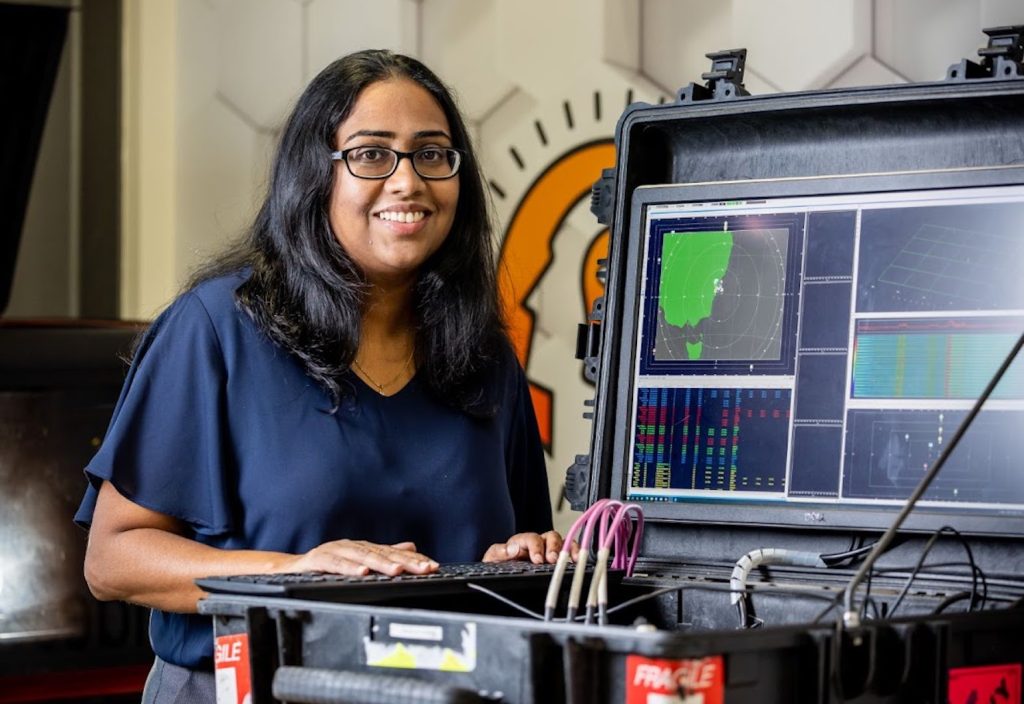Welcoming qualified people back into engineering roles will help to improve diversity and inclusion.
When Singithi De Silva started job hunting after migrating to Australia, having a child, and completing her PhD, she was met with repeated rejections.
The experienced software engineer had only been out of the workforce for eight years, but after three months of applying for positions, she was struggling to find something that appropriately recognised her skills and qualifications.
Enter STEM Returners: an organisation helping support workers get back to their careers.
“I made a LinkedIn profile after submitting my thesis, and I received a message from STEM Returners telling me about their program,” De Silva tells create.
STEM Returners Australia launched in 2020, to aid diversity and inclusion within the STEM sectors. In a tight employment market, the program opens up candidates from a new talent pool, and offers them a supported route back to their career.
Engineers Australia is partnering with STEM Returners as part of its strategy to build, attract and retain engineers. In encouraging qualified engineers back to the field, the partnership will focus on women like De Silva.
“What I like about the program is that it values the skills of returners even though it might have been a number of years since those skills were used,” she says.
“The opportunity has changed my career completely. I was pleased to be able to prove that I am capable of doing the job regardless of the number of years I was away from the work. This is a great result.”
Stemming the tide
A 2021 report by Professionals Australia found that carer responsibilities is one of the factors linked with female attrition from the STEM workforce. Nearly one-fifth — 19 per cent — of university qualified females who had a STEM qualification and worked full-time in 2011 left the labour force after having a child.
First launched in the United Kingdom in 2017, STEM Returners has a 97 per cent success rate with candidates obtaining permanent positions upon completion of the program to date.
In Australia, some 90 per cent of its roles are in engineering. The first company to join the Australian program was aerospace and security firm BAE Systems Australia, following the success of their first program of six Returners in 2021, they have now commenced their second program of 10 Returners.
The firm’s senior communications manager Kaye Noske says the program offers 12 week internships, with formal job offers being made at the end of the year.
“What it’s showing us is that there is an untapped pool of highly skilled, capable and experienced people out there looking for work,” she says. “From our perspective, it’s a great matchmaking service.”
A similar scheme involving BAE Systems’ UK business has resulted in 96 per cent of STEM Returner interns being offered a full-time position with the firm.
Working with STEM Returners
Marcail Roe, director of STEM Returners Australia, says that the organisation is seeking to find a solution to an industry-wide problem.
“Our unique Returner program helps highly qualified STEM professionals to return to industry after a career break, enabling STEM leaders to access the best available talent, and in doing so, improve diversity and inclusion within their organisation,” she says.
“We partner with organisations to provide professional returners for their vacancies, we offer a variety of programs based on their needs.”
Returners are placed on an initial 12 week paid placement, with the option of a permanent opportunity upon completion.
“Our Returners are provided a professional mentor via our partnership with Engineers Australia. Along with that we provide them with personal coaching and mentoring to ensure they are set up for success and feeling confident as they restart their career,” Roe says.
“The initial 12 week placement provides the platform for them to show their capabilities along with any upskilling or transferring of skills to take place. Upon completion of the 12 weeks the desired outcome is for both parties to be satisfied and the Returner to remain on in a permanent capacity.”
Roe says that in its first full year of operating in Australia, STEM Returners has placed 25 Returners into programs, with all 25 offered permanent positions upon completion, and 92 per cent of them still with the organisation after 12 months.
In line with its diversity and inclusion emphasis, some 64 per cent of Returners were women and 76 per cent were from ethnic minority groups.
“In Australia, we are trying to provide a supportive pathway for STEM professionals to restart their career and break down those barriers of traditional recruitment,” Roe says.
“We also have a strong focus on trying to increase more women back to their STEM careers and often that comes down to being able to offer flexible and hybrid working arrangements.
“One thing is for certain: this talent pool cannot be ignored any longer.”
